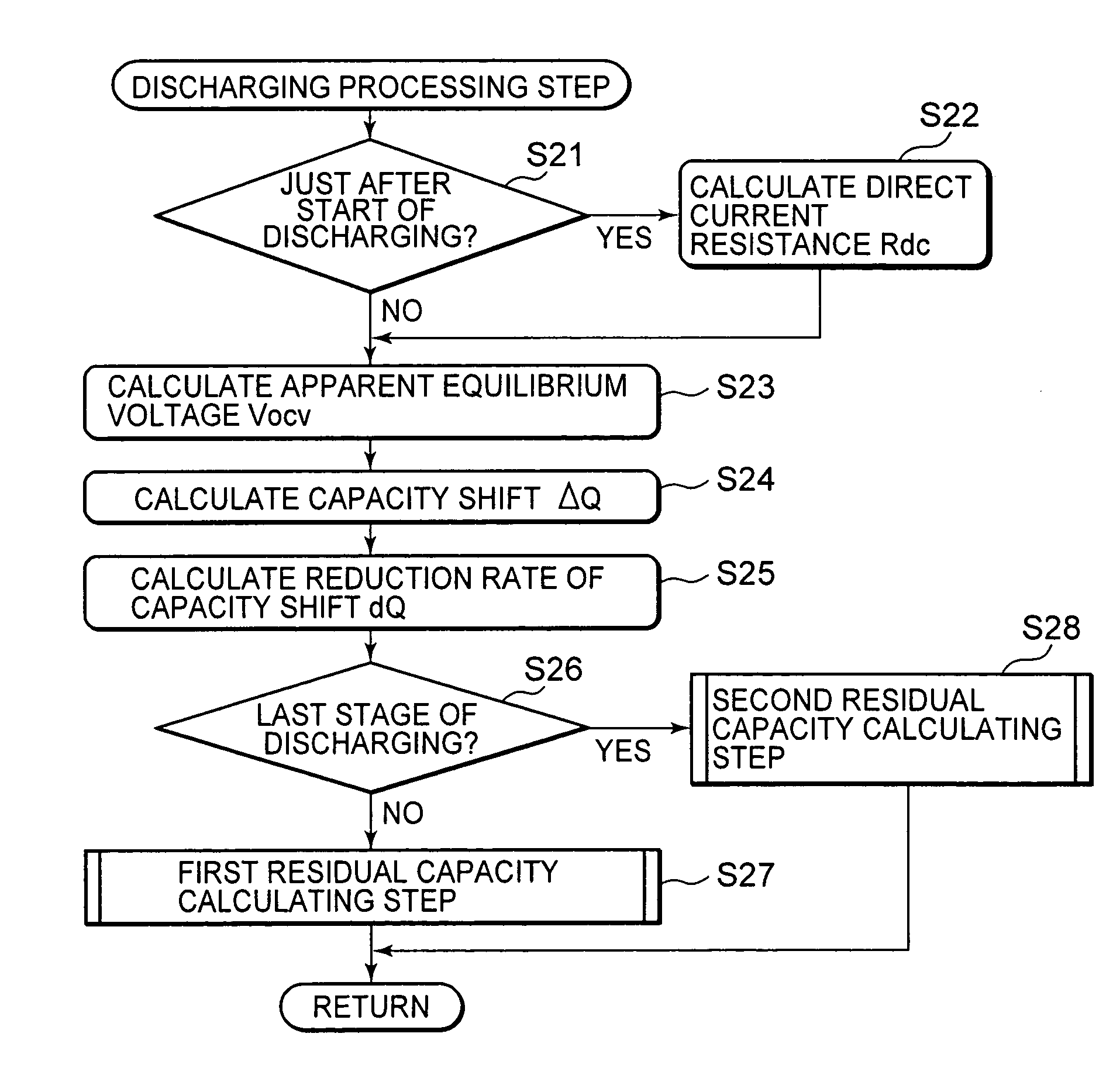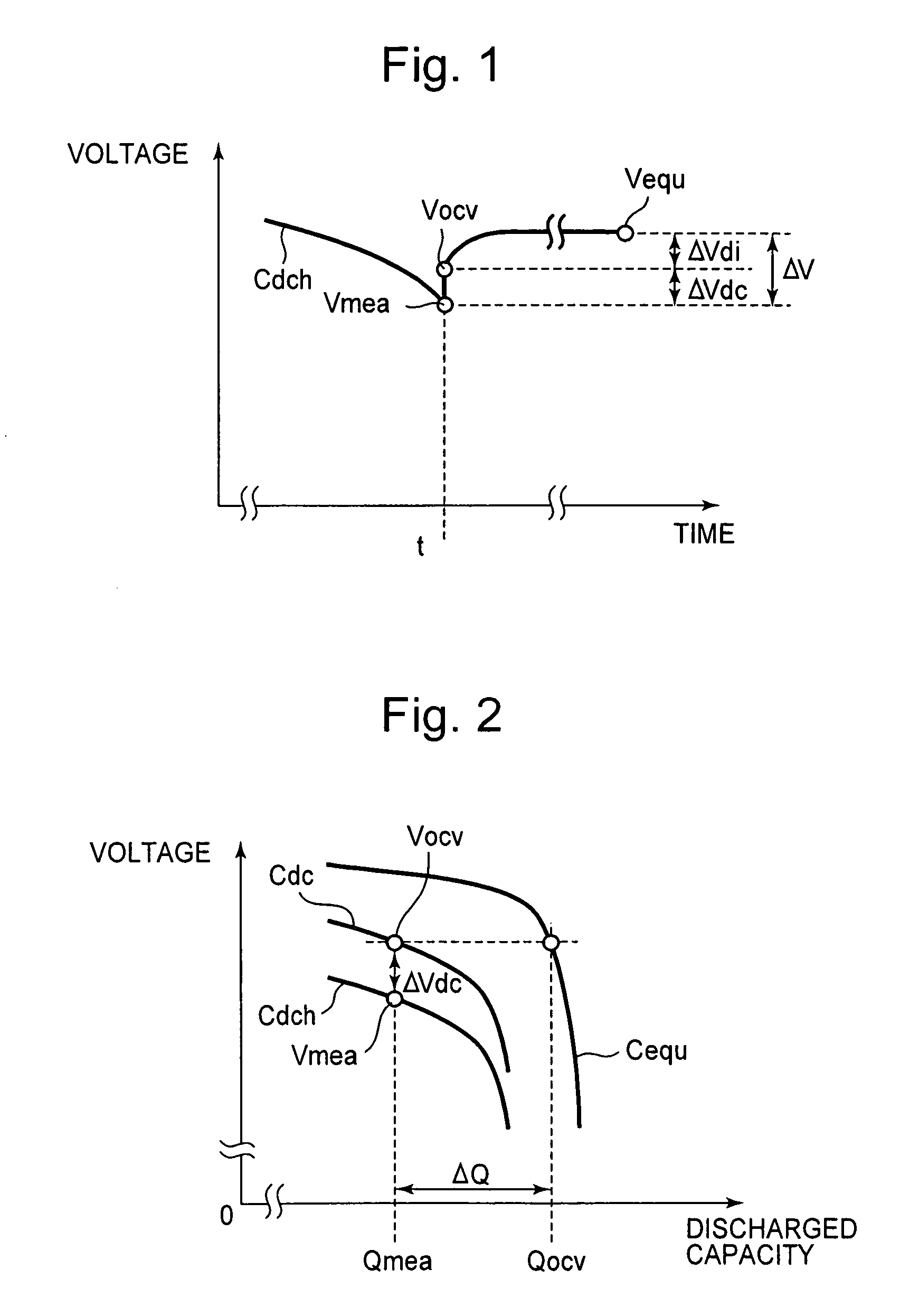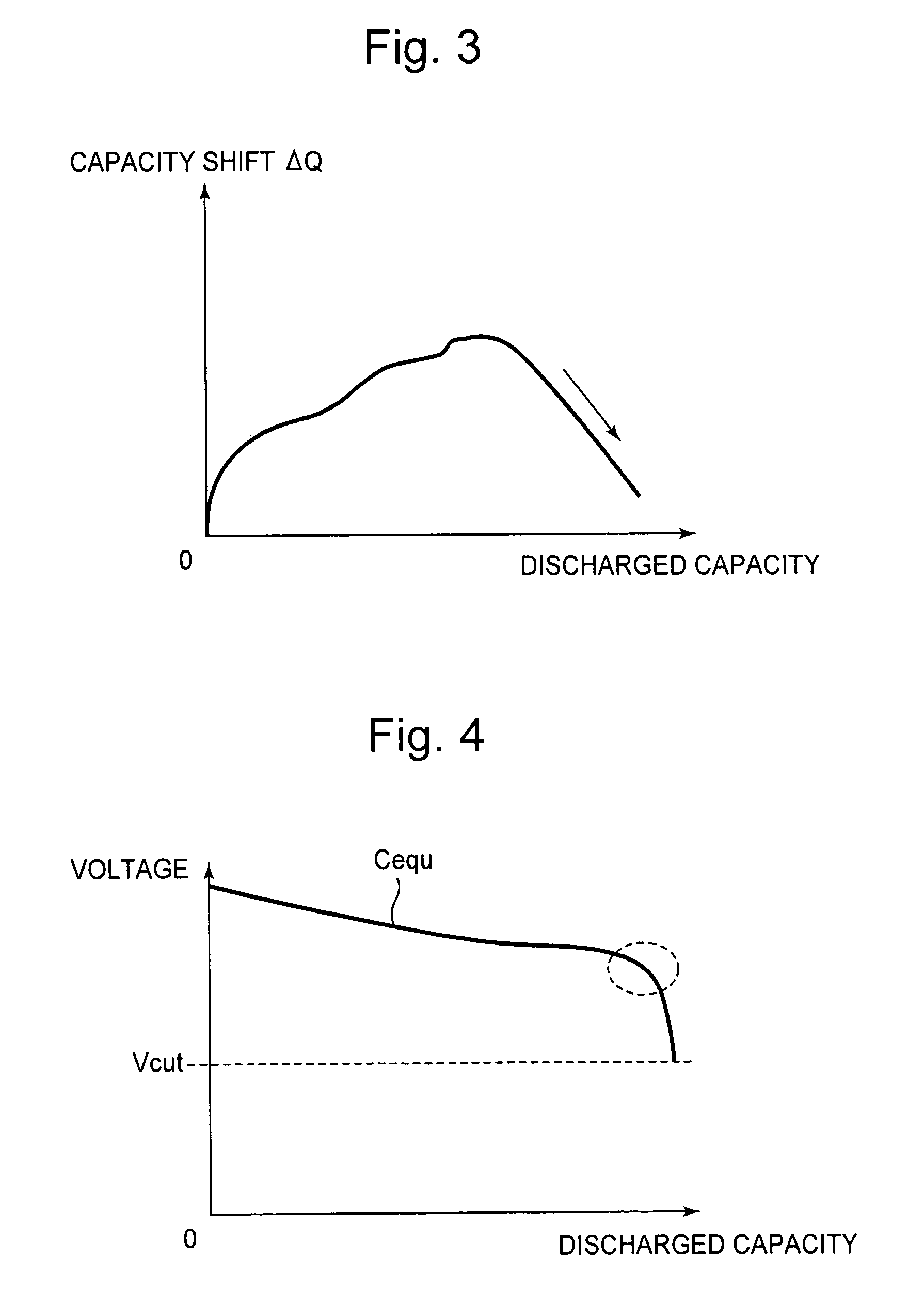Battery capacity calculating method, battery capacity calculating apparatus and battery capacity calculating program
a battery capacity and calculation method technology, applied in the direction of electrochemical generators, instruments, transportation and packaging, etc., can solve the problems of significant changes in the relation between the terminal voltage and the residual capacity of the battery, affecting the estimation accuracy of residual capacity, and the tendency of the terminal voltage to fall rapidly, so as to achieve accurate residual capacity and/or residual power
- Summary
- Abstract
- Description
- Claims
- Application Information
AI Technical Summary
Benefits of technology
Problems solved by technology
Method used
Image
Examples
Embodiment Construction
[0052]The present invention relates to a battery capacity calculating method, a battery capacity calculating apparatus and a battery capacity calculating program, all being for calculating residual capacities and / or residual power of a secondary battery.
[0053]In the following, various embodiments to which the present invention is applied is described in detail, referring to the attached drawings.
[0054]The present embodiment is a battery capacity calculating method for calculating residual capacities of a secondary battery such as a lithium ion secondary battery used as a power supply of an electronic apparatus such as a notebook type personal computer and a portable telephone. The present embodiment is based on the fact that the applicant of the present application had a knowledge that it was possible to estimate a discharge curve in the last stage of discharging very accurately despite during discharging by performing examinations of the characteristics of discharge curves in the l...
PUM
| Property | Measurement | Unit |
|---|---|---|
| length | aaaaa | aaaaa |
| diameter | aaaaa | aaaaa |
| resistance | aaaaa | aaaaa |
Abstract
Description
Claims
Application Information
 Login to View More
Login to View More - R&D
- Intellectual Property
- Life Sciences
- Materials
- Tech Scout
- Unparalleled Data Quality
- Higher Quality Content
- 60% Fewer Hallucinations
Browse by: Latest US Patents, China's latest patents, Technical Efficacy Thesaurus, Application Domain, Technology Topic, Popular Technical Reports.
© 2025 PatSnap. All rights reserved.Legal|Privacy policy|Modern Slavery Act Transparency Statement|Sitemap|About US| Contact US: help@patsnap.com



